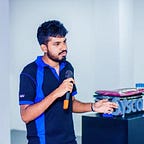5 Software Engineering Interview Questions to Identify Outstanding Programmers
Ask these analytical questions to hire the best out of the best.
As a developer, you may conduct interviews with other developers who are willing to join your company. Frequently asked software engineering questions can be categorized into several categories such as domain knowledge, data structures, algorithms, critical thinking, technical experience, etc. Undoubtedly, any developer could grasp technical experience and domain knowledge easily. But all developers won’t become experts in topics such as data structures, algorithms, and critical thinking. Therefore, many interviewers who are hiring developers test these areas more if they need to hire the best out of the best. Also, top tech companies that are looking for outstanding developers prioritize these types of problems over technical experience-based questions because it’s hard to improve someone’s analytical skills than technical skills after they were hired.
The following problems fall into the most important topics that were mentioned above. If you conduct interviews, try asking a problem from these. Otherwise, if you are practicing for a software engineering interview give a try to solve all without checking the solution first.
